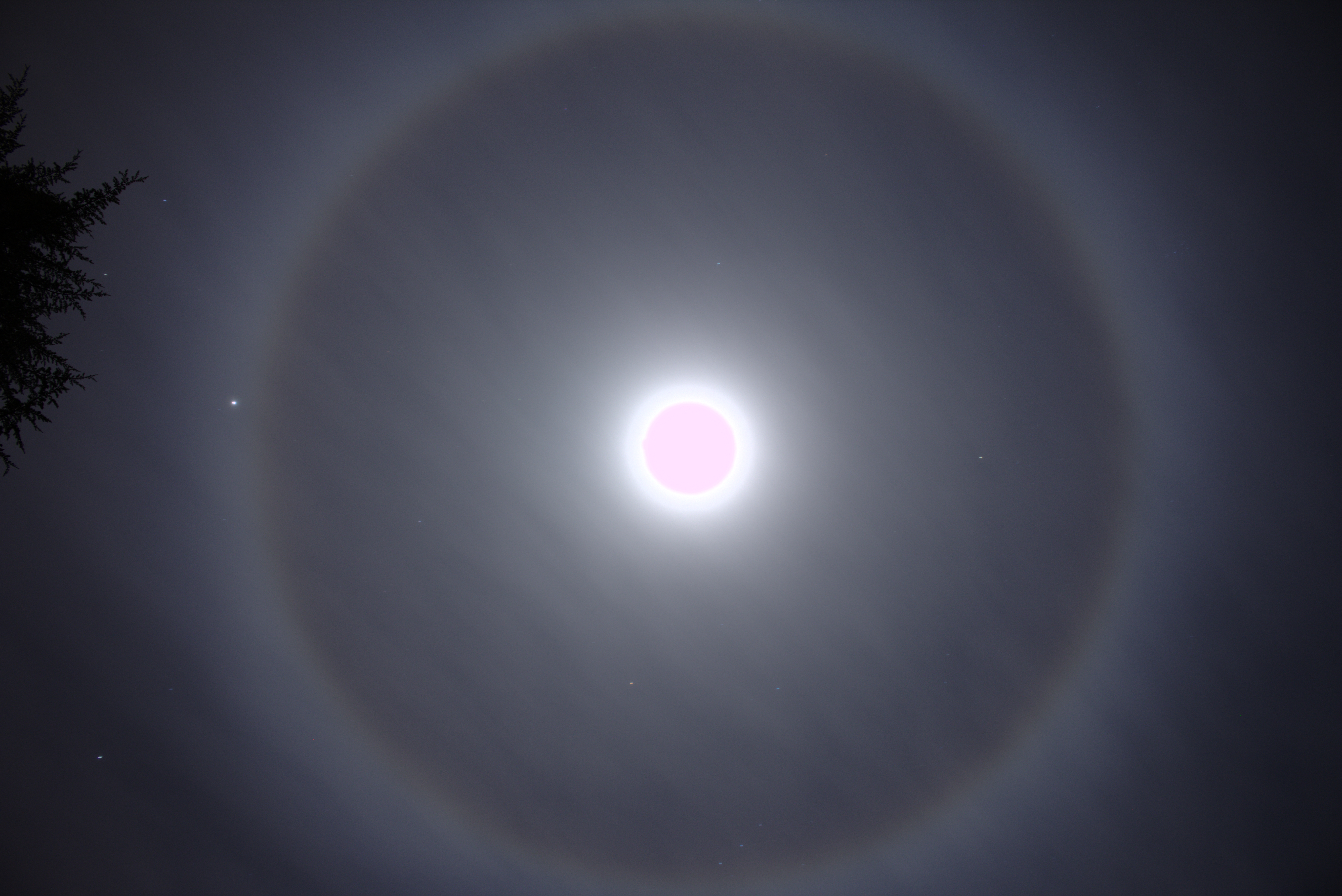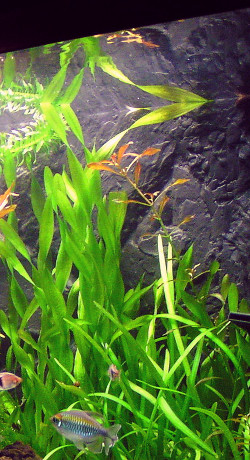|
Goos–Hänchen Effect
The Goos–Hänchen effect, named after Hermann Fritz Gustav Goos (1883–1968) and Hilda Hänchen (1919–2013), but first suggested by Isaac Newton (1643–1727), is an optical phenomenon in which linearly polarized light undergoes a small lateral shift when totally internally reflected. The shift is perpendicular to the direction of propagation in the plane containing the incident and reflected beams. This effect is the linear-polarization analog of the Imbert–Fedorov effect. Acoustic analog of the Goos–Hänchen effect is known as Schoch displacement. Description This effect occurs because the reflections of a finite-sized beam interferes along a line transverse to the average propagation direction. As shown in the figure, the superposition of two plane waves with slightly different angles of incidence but with the same frequency or wavelength is given by : \mathbf(x, z, t) = \mathbf^\text \left(e^ + e^\right) \cdot e^, where : \mathbf_1 = k cos(\thet ... [...More Info...] [...Related Items...] OR: [Wikipedia] [Google] [Baidu] [Amazon] |
Fritz Goos
Hermann Fritz Gustav Goos (11 January 1883 – 18 May 1968) was a German physicist and astronomer. Life and work Goos attended the '' Johanneum'' '' Gymnasium'' in Hamburg, from where he graduated with a high school diploma in March 1902. Until April 1903 he then worked in the machine factory ''Wimmel & Landgraf'' in Hamburg. In October 1903 he began to study mathematics and science at the ''Königliche Technische Hochschule'' (now Technische Universität Berlin) in Berlin. In March 1905 he joined the University of Bonn in the summer semester to study astronomy and mathematics. In the following winter semester, he continued his studies in Berlin, but in April 1906 went back to Bonn, where he earned a doctorate degree in astronomy in 1908. After graduating, he became an assistant at Bonn Observatory, and in 1909 he became an assistant at the Hamburg Observatory. From 1911 he worked at the Physical State Institute (founded in 1885 as the Physical State Laboratory) in Hamburg, wh ... [...More Info...] [...Related Items...] OR: [Wikipedia] [Google] [Baidu] [Amazon] |
Hilda Hänchen
Hilda Hänchen (later Hilda Lindberg or Hilda Lindberg-Hänchen, 1 September 1919 - 19 October 2013) was a German physicist. Life and work Hilda Hänchen received her doctorate in 1943 from the University of Hamburg under the supervision of Fritz Goos, with a dissertation titled ''Über das Eindringen des totalreflektierten Lichtes in das dünnere Medium'' ("On the penetration of totally reflected light into the rarer medium"). During World War II she worked as a "managing" research assistant at the State Physics Institute in Hamburg (to allow male academics to return after military service, women could be employed as managing assistants only). She concurrently worked at the Physical-Chemical Research Institute in Kiel on war research contracts and was listed in the register of sponsorships of the ''Reichsforschungsrat'' ("Reich Research Council"). From 1949 to 1951 she was a referee for the chemistry journal ''Chemisches Zentralblatt''. Around 1975 she was the chairperson of ... [...More Info...] [...Related Items...] OR: [Wikipedia] [Google] [Baidu] [Amazon] |
Isaac Newton
Sir Isaac Newton () was an English polymath active as a mathematician, physicist, astronomer, alchemist, theologian, and author. Newton was a key figure in the Scientific Revolution and the Age of Enlightenment, Enlightenment that followed. His book (''Mathematical Principles of Natural Philosophy''), first published in 1687, achieved the Unification of theories in physics#Unification of gravity and astronomy, first great unification in physics and established classical mechanics. Newton also made seminal contributions to optics, and Leibniz–Newton calculus controversy, shares credit with German mathematician Gottfried Wilhelm Leibniz for formulating calculus, infinitesimal calculus, though he developed calculus years before Leibniz. Newton contributed to and refined the scientific method, and his work is considered the most influential in bringing forth modern science. In the , Newton formulated the Newton's laws of motion, laws of motion and Newton's law of universal g ... [...More Info...] [...Related Items...] OR: [Wikipedia] [Google] [Baidu] [Amazon] |
Optical Phenomenon
Optical phenomena are any observable events that result from the interaction of light and matter. All optical phenomena coincide with quantum phenomena. Common optical phenomena are often due to the interaction of light from the Sun or Moon with the atmosphere, clouds, water, dust, and other particulates. One common example is the rainbow, when light from the Sun is reflected and refracted by water droplets. Some phenomena, such as the green ray, are so rare they are sometimes thought to be mythical. Others, such as Fata Morganas, are commonplace in favored locations. Other phenomena are simply interesting aspects of optics, or optical effects. For instance, the colors generated by a prism are often shown in classrooms. Scope ''Optical phenomena encompass a broad range of events, including those caused by atmospheric optical properties, other natural occurrences, man-made effects, and interactions involving human vision (entoptic phenomena)''. Also listed here are unexplain ... [...More Info...] [...Related Items...] OR: [Wikipedia] [Google] [Baidu] [Amazon] |
Linear Polarization
In electrodynamics, linear polarization or plane polarization of electromagnetic radiation is a confinement of the electric field vector or magnetic field vector to a given plane along the direction of propagation. The term ''linear polarization'' (French: ''polarisation rectiligne'') was coined by Augustin-Jean Fresnel in 1822.A. Fresnel, "Mémoire sur la double réfraction que les rayons lumineux éprouvent en traversant les aiguilles de cristal de roche suivant les directions parallèles à l'axe", read 9 December 1822; printed in H. de Senarmont, E. Verdet, and L. Fresnel (eds.), ''Oeuvres complètes d'Augustin Fresnel'', vol. 1 (1866), pp.731–51; translated as "Memoir on the double refraction that light rays undergo in traversing the needles of quartz in the directions parallel to the axis", , 2021 (open access); §9. See '' polarization'' and ''plane of polarization'' for more information. The orientation of a linearly polarized electromagn ... [...More Info...] [...Related Items...] OR: [Wikipedia] [Google] [Baidu] [Amazon] |
Total Internal Reflection
In physics, total internal reflection (TIR) is the phenomenon in which waves arriving at the interface (boundary) from one medium to another (e.g., from water to air) are not refracted into the second ("external") medium, but completely reflected back into the first ("internal") medium. It occurs when the second medium has a higher wave speed (i.e., lower refractive index) than the first, and the waves are incident at a sufficiently oblique angle on the interface. For example, the water-to-air surface in a typical fish tank, when viewed obliquely from below, reflects the underwater scene like a mirror with no loss of brightness (Fig.1). TIR occurs not only with electromagnetic waves such as light and microwaves, but also with other types of waves, including sound and water waves. If the waves are capable of forming a narrow beam (Fig.2), the reflection tends to be described in terms of " rays" rather than waves; in a medium whose properties are independent of direction, such ... [...More Info...] [...Related Items...] OR: [Wikipedia] [Google] [Baidu] [Amazon] |
Imbert–Fedorov Effect
The Imbert–Fiodaraŭ effect, named after Fiodar Ivanavič Fiodaraŭ (1911–1994) and Christian Imbert (1937–1998),http://e-ico.org/node/81 is an optical phenomenon whereby a beam of circularly or elliptically polarized light undergoes a small sideways shift when refracted or totally internally reflected. The sideways shift is perpendicular to the plane containing the incident and reflected beams. This effect is the circular polarization analog of the Goos–Hänchen effect The Goos–Hänchen effect, named after Hermann Fritz Gustav Goos (1883–1968) and Hilda Hänchen (1919–2013), but first suggested by Isaac Newton (1643–1727), is an optical phenomenon in which linearly polarized light undergoes a .... References * * * Optical phenomena {{optics-stub ... [...More Info...] [...Related Items...] OR: [Wikipedia] [Google] [Baidu] [Amazon] |
Acoustics
Acoustics is a branch of physics that deals with the study of mechanical waves in gases, liquids, and solids including topics such as vibration, sound, ultrasound and infrasound. A scientist who works in the field of acoustics is an acoustician while someone working in the field of acoustics technology may be called an Acoustical engineering, acoustical engineer. The application of acoustics is present in almost all aspects of modern society with the most obvious being the audio and noise control industries. Hearing (sense), Hearing is one of the most crucial means of survival in the animal world and speech is one of the most distinctive characteristics of human development and culture. Accordingly, the science of acoustics spreads across many facets of human society—music, medicine, architecture, industrial production, warfare and more. Likewise, animal species such as songbirds and frogs use sound and hearing as a key element of mating rituals or for marking territories. Art, ... [...More Info...] [...Related Items...] OR: [Wikipedia] [Google] [Baidu] [Amazon] |
Journal Of Applied Physics
The ''Journal of Applied Physics'' is a peer-reviewed scientific journal with a focus on the physics of modern technology. The journal was originally established in 1931 under the name of ''Physics'', and was published by the American Physical Society for its first 7 volumes. In January 1937, ownership was transferred to the American Institute of Physics "in line with the efforts of the American Physical Society to enhance the standing of physics as a profession". The journal's current editor-in-chief is André Anders ( Leibniz Institute of Surface Engineering). According to the ''Journal Citation Reports ''Journal Citation Reports'' (''JCR'') is an annual publication by Clarivate. It has been integrated with the Web of Science and is accessed from the Web of Science Core Collection. It provides information about academic journals in the natur ...'', the journal has a 2023 impact factor of 2.7. References External links * Physics journals Weekly journals Academ ... [...More Info...] [...Related Items...] OR: [Wikipedia] [Google] [Baidu] [Amazon] |
Nanophotonics
Nanophotonics or nano-optics is the study of the behavior of light on the nanometer scale, and of the interaction of nanometer-scale objects with light. It is a branch of optics, optical engineering, electrical engineering, and nanotechnology. It often involves dielectric structures such as nanoantennas, or metallic components, which can transport and focus light via surface plasmon polaritons. The term "nano-optics", just like the term "optics", usually refers to situations involving ultraviolet, visible, and near-infrared light (free-space wavelengths from 300 to 1200 nanometers). Background Normal optical components, like lenses and microscopes, generally cannot normally focus light to nanometer (deep subwavelength) scales, because of the diffraction limit ( Rayleigh criterion). Nevertheless, it is possible to squeeze light into a nanometer scale using other techniques like, for example, surface plasmons, localized surface plasmons around nanoscale metal objects, and ... [...More Info...] [...Related Items...] OR: [Wikipedia] [Google] [Baidu] [Amazon] |
Lee Giles
Clyde Lee Giles is an American computer scientist and is the Emeritus David Reese Professor at the Penn State College of Information Sciences and Technology (IST) at the Pennsylvania State University where he taught for 24 years. He was also Graduate Faculty Professor of Computer Science and Engineering, Courtesy Professor of Supply Chain and Information Systems, and Director of the Intelligent Systems Research Laboratory. He was Interim Associate Dean of Research in the College of IST. He is now emeritus faculty. He graduated from Oakhaven High School in Memphis, Tennessee. His graduate degrees are from the University of Michigan and the University of Arizona and his undergraduate degrees are from Rhodes College and the University of Tennessee. His PhD is in optical sciences with advisor Harrison H. Barrett. His academic genealogy includes two Nobel laureates (Felix Bloch and Werner Heisenberg), Arnold Sommerfeld and prominent mathematicians. Research/Career Giles has been ass ... [...More Info...] [...Related Items...] OR: [Wikipedia] [Google] [Baidu] [Amazon] |





